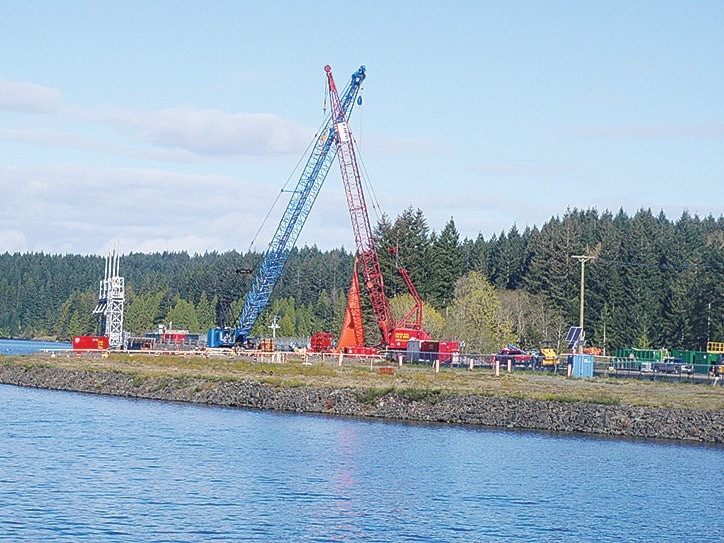The Campbell River watershed set a new record this month. But that’s not a good thing.
With record-low water amounts flowing into the river system, BC Hydro announced Monday it was beginning a dramatic reduction in discharge from John Hart dam.
From Monday, when outflow levels were at 57 cubic metres per second (m3/s), the discharge will be steadily reduced until reaching about 32 m3/s Saturday. That will leave flow levels downstream of the hydroelectric facilities at about a third of their typical level for this time of year.
The move is being made to save available water storage as the flow of water coming into the reservoir system slows to a trickle.
“The water inflows into the Campbell River system are currently around 16-18 m3/s, and this shatters the previous record low of 40 m3/s (1981) over about 52 years of record,” BC Hydro spokesperson Stephen Watson said. The previous record low was set in 1981.
In recent weeks BC Hydro had been releasing about 3.5 times the amount of water down the Campbell River as had been entering the upper watershed.
Even with the steep reduction, flows will still be twice the amount that’s currently entering the system.
“Being in June we would normally be in the middle of the freshet but essentially there’s been no snow melt into the system,” Watson said. “BC Hydro has managed, and will continue to manage the system, as best as possible for water use interests like fish habitat and recreation.”
But, as BC Hydro warned in summer projections announced a month ago, it will not be an ideal situation on either side of the dam.
BC Hydro has been able to provide just enough water downstream of John Hart over the spring season for fish rearing and out-migration into the ocean. It has fallen far short of target flows, but the amount has been appropriate given the weather conditions, Watson said.
The conditions are also looking bleak for reservoir recreation this summer with record low reservoir levels for this time of year.
The Lower Campbell Reservoir/McIvor Lake is currently at 176.1 metres, a record low for this time of year in 52 years of records. And it will stay at record lows this summer, perhaps lowering to about 175.4 metres by the end of September. BC Hydro’s Water Use Plan targets reservoir elevations between 176.5 metres and 177.5 metres from now through September 10.
The Upper Campbell Reservoir/Buttle Lake is currently 216.6 metres and has just entered a record low level for this time of year. This much larger storage reservoir will also set record lows through the summer period, and may draft below 215 metres by the end of September.
Just a month ago, BC Hydro was forecasting levels near 217 metres through September.
“The Water Use Plan targets reservoir elevations between 217 metres and 220.5 metres from now through September 10, and prefers that it be between 219-219.5 metres,” said Watson. “That means conditions will be up to four metres lower than preferred.”
This all translates to a lot more sand and rock around the shorelines and more of a walk to get to the water. It will be harder to put watercraft in the reservoir, and for those watercraft, a more exposed reservoir bottom with navigation obstacles will await.
In normal seasons, Campbell River benefits from diversion from the Quinsam and/or Salmon River systems. But both are extremely low with flows rates of 1 m3/s or less. No water has been diverted into the Campbell River system from the Quinsam River diversion since March 29, and from the Salmon River diversion since May 3, Watson said.
For the Quinsam River and the upper Wokas dam, BC Hydro has received a series of water licence variances from the Comptroller of Water Rights over the past few months to proactively react to these drought conditions. The minimum licence flow for May through October is 1 m3/s but the variance allows flows down to about 0.3 m3/s. Ideally, when the pink salmon arrive to spawn in late August, the flow rate will be increased to 0.7 m3/s. But that is subject to water and weather conditions later this summer and the potential risks of running out of water storage.
Besides impacts on fish and recreation, the low water levels are also impacting BC Hydro’s power generation.
On the nearby Puntledge River hydroelectric system, on June 16, BC Hydro shut down power generation to conserve water within the Comox Lake reservoir. The John Hart generating station will be running at about 20-25 per cent of capacity — the lowest operating level within BC Hydro’s water licence.
